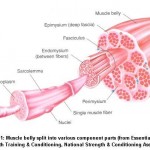It’s the first week after New Years and the gyms will be overflowing with New Years resolutioners. The resolutions are usually some vague goal such as ‘lose some weight’ or ‘get in shape’ etc. These people are well intentioned no doubt, but one of the problems I see with this sort of action is a lack of a defined goal and a lack of a structured plan to get there.
This is the time of year that reminds me how confusing and complicated the diet and fitness media has made things. It’s becoming apparent that people think getting in shape must be significantly more complicated than it has to be.
In reality, there are just a few basic items that need to be taken care of to reach any diet and fitness goal. Unfortunately most people look right past these fundamental basics and instead, clutter their minds and lives with the minutiae and trivial things written in the pages of fitness magazines and blogs.
If you don’t have the basics under control none of the fancy techniques you read about will be of any value.
First and foremost you have to get back to basics, and get a base of effective principles and habits in place before you even think of messing around with fancy diet or advanced training techniques.
For example, do you even get an hour of movement in per day? If not, then that is your first order of business…forget about ‘functional training’ or a periodized workout routine, just get out of your house and get moving for a start.
After that you need to get calories in control, if you don’t know how many calories you consume on a daily basis then you must get this under control before you start reading about vegetarianism, or paleo this, and low carb that, and the latest diet fads. No matter what a marketing claim has told you…calories matter, and you have to get a handle on them if you’re serious about making a change in your body.
These are the most basic items that you must get a handle on if you want to change your body. If you’re struggling to make a change in your body and you don’t know where to start, then make your resolution to get back to basics and build effective habits for the new year.
In today’s podcast, we’ll discuss the basic principles that are essential for getting in shape, it’s simpler than you think.
John
Login and Download Podcast Here
For more information as well as how to get access to Adonis UNCENSORED, click the link below:
Adonis UNCENSORED Premium Podcast















